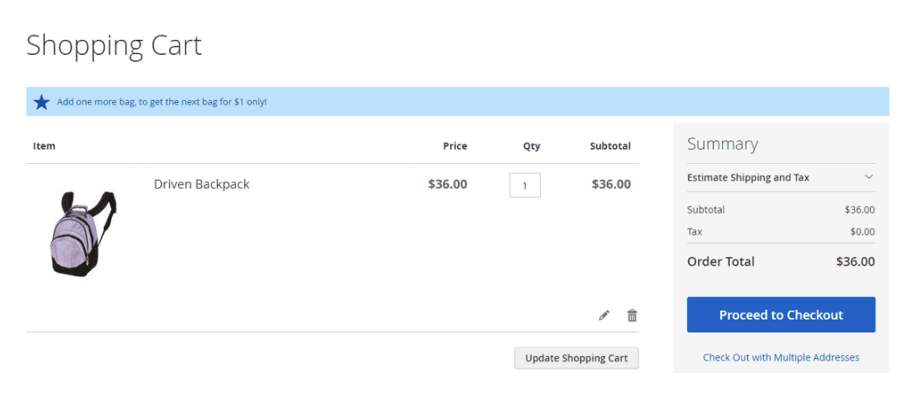N+M / Each N
This promo type will make it to create BOGO rules within the same group of products. Another way to look at it is offering M products free / discounted, on each N added.
Promo examples:
- 1+1 on bags
- 3+2 on t-shirts
- Buy 3 pants, get the fourth one with a 50% discount
- Buy 2 watches, get the third one for $1 only
You can also make the promotion work only after that certain number of product was added. For example, "1+1 on socks, after 5 purchased for the full price".
Configuration
In the actions list, we have the "N+M / Each N" action type -
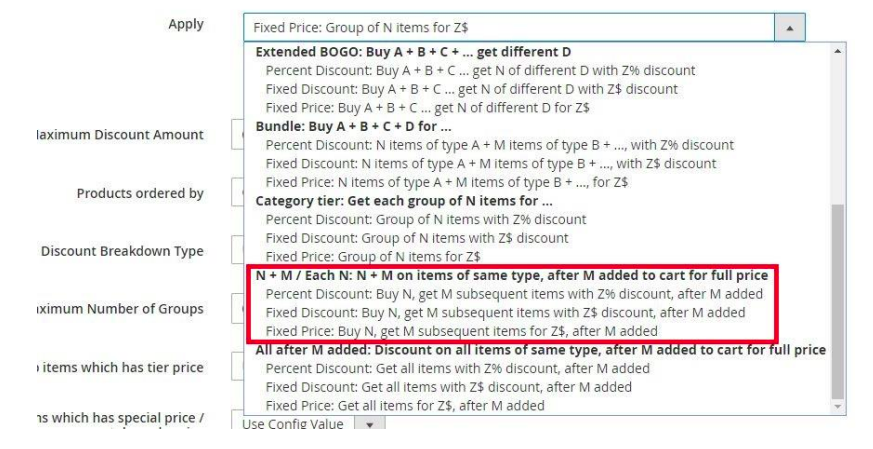
Once selected, the following fields will show up -
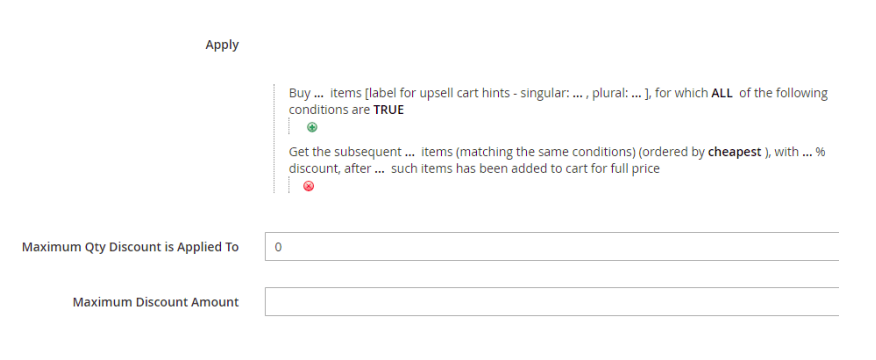
Fields explanation
- Buy … items – N - the number of items to buy in order to get the subsequent M items with discount.
- Buy … items label for cart hints – singular / plural – the name that will show up in the cart hints, representing the discounted items.
- Items, for which ALL of the following conditions are TRUE – the condition on items in cart which define the items on which the N + M rule applies.
- Get the subsequent … items – M – the number of items that get the discount
- With … % discount – the discount percent on the M items
- After … such items has been added to cart for full price - number of items that the customer must pay a full price on, before the N + M rule is applied
- Ordered by (cheapest / most expensive) – the items order by which the promotion discount will get applied
- Maximum Qty Discount is Applied To – maximum quantity of items the discount can be applied to
- Maximum Discount Amount – maximum discount amount that customer can get in his cart using this promotion
N + M / Each N – Percent Discount
Example
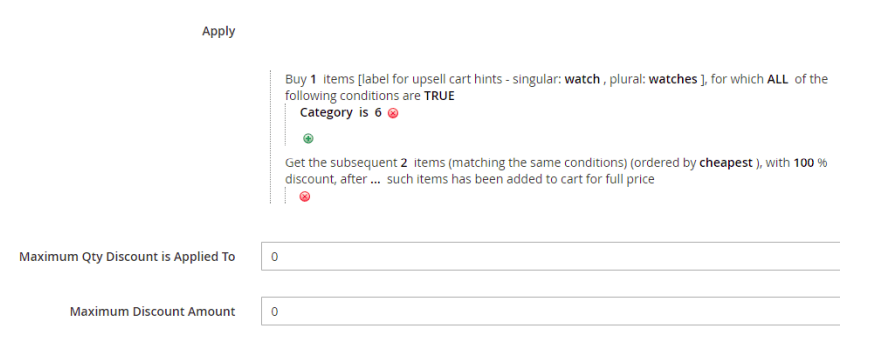
The rule in this example is – “1 + 2 on watches”.
Note: In our example, watch is any product that belongs to category 6.
Cart examples for this rule:
- Customer has 1 watch (10$), 1 watch (20$) and 1 watch 30$ in cart. The discount amount is 30$. (The 30$ watch is N (since the order is starting from the most expensive), and the next two are M).
- Customer has 2 watches (10$), 2 watches (20$ each), 1 watch (30$). The discount amount is 40$. (30$ is N, 2x20$ is M (for free), 10$ is N, 10$ is M)
Upsell cart hints example for this rule:
- Customer has 1 bag in cart. The upsell cart hint is “Add one watch, to get the next 2 watches for free each!”
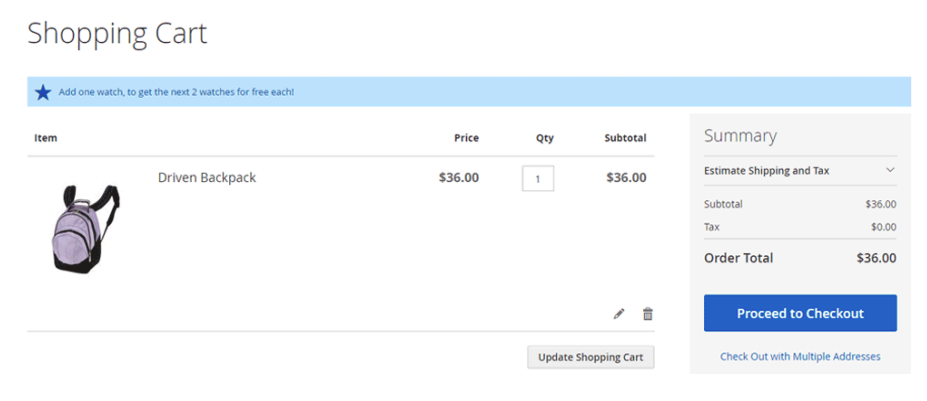
N + M / Each N - Fixed Discount
Example
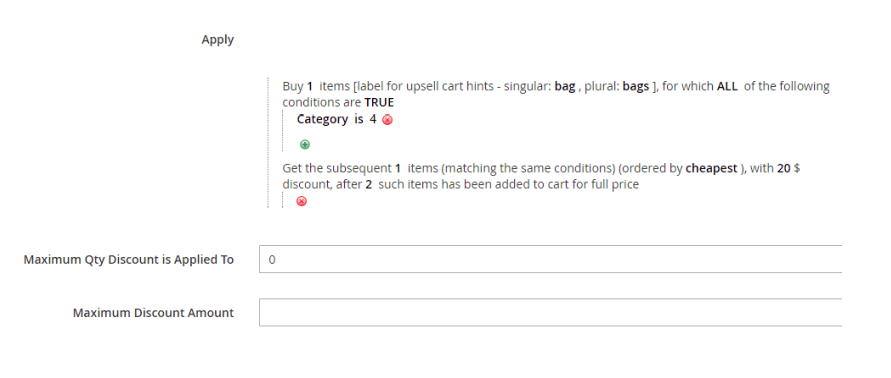
The rule in this example is – “Get 20$ discount on each second bag (when buying at least two bags for full price)”.
Note: In our example, bag is any product that belongs to category 4.
Cart examples for this rule:
- Customer has 3 bags (30$ each) in cart. There is no discount. (2 bags are added for full price and the third one is N, therefore we didn’t get to M (the bag which gets the discount))
- Customer has 2 bags (30$ each) and 2 bags (40$ each) in cart. The discount amount is 20$. (2 30$ bags are added for full price, 1 40$ bag is N and the next 40$ bag is M that gets the 20$ discount)
Upsell cart hints example for this rule:
Customer has 1 bag in cart. The upsell cart hint is “Add 2 more bags, to get the next bag with $20 discount!”
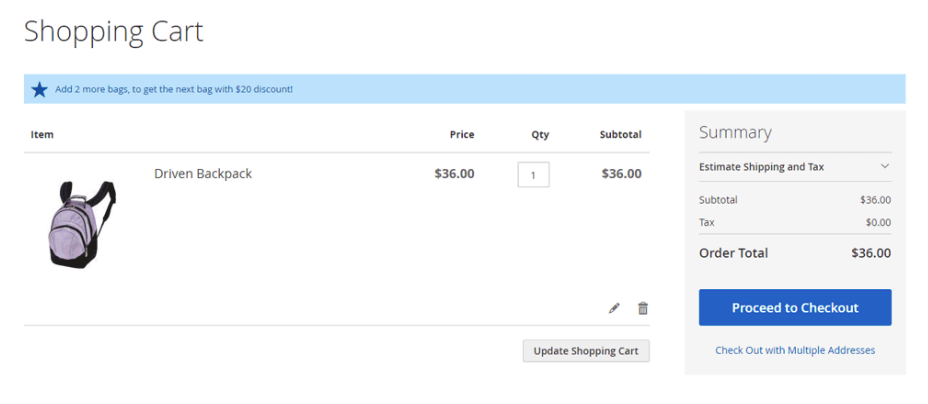
N + M / Each N - Fixed Price
Example

The rule in this example is – “Each third bag for 1$”
Note: In our example, bag is any product that belongs to category 4.
Cart examples for this rule:
- Customer has 3 bags (30$ each) in cart. The discount amount is 29$.
- Customer has 6 bags (30$ each) in cart. The discount amount is 29$. (Since the “Maximum discount amount” is 50$, the rule cannot be applied on the next 3 bags, because then the discount will be 2x29$ = 58$)
Upsell cart hints example for this rule:
Customer has 1 bag in cart. The upsell cart hint is “Add one more bag, to get the next bag for $1 only!” –
